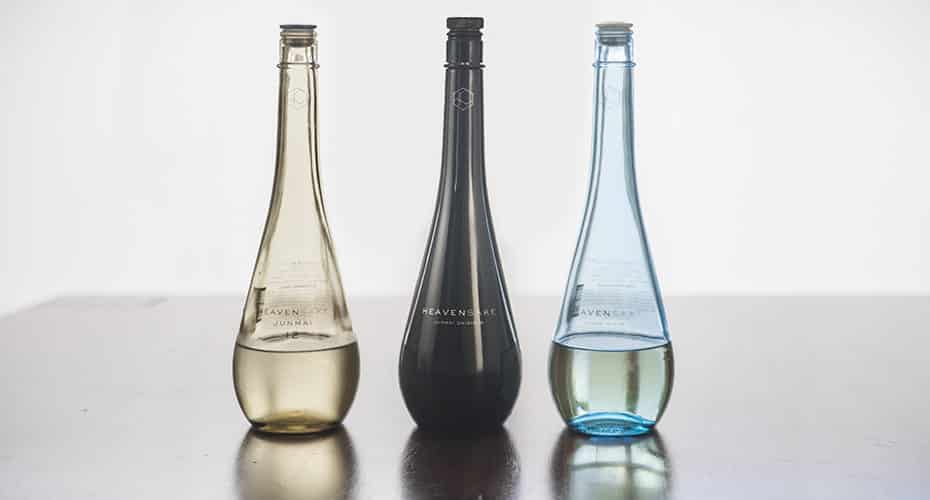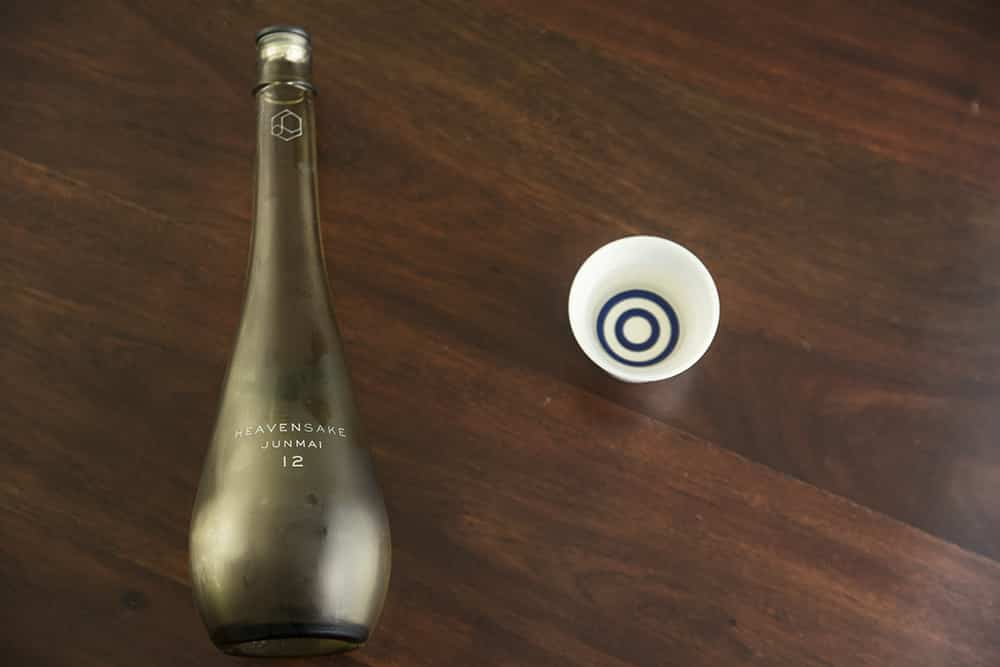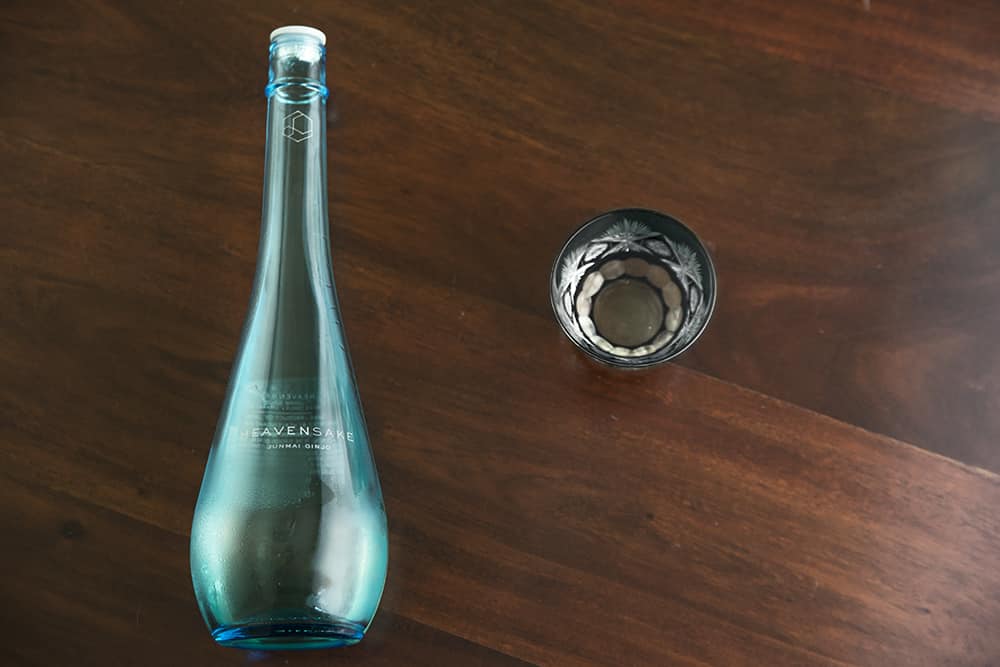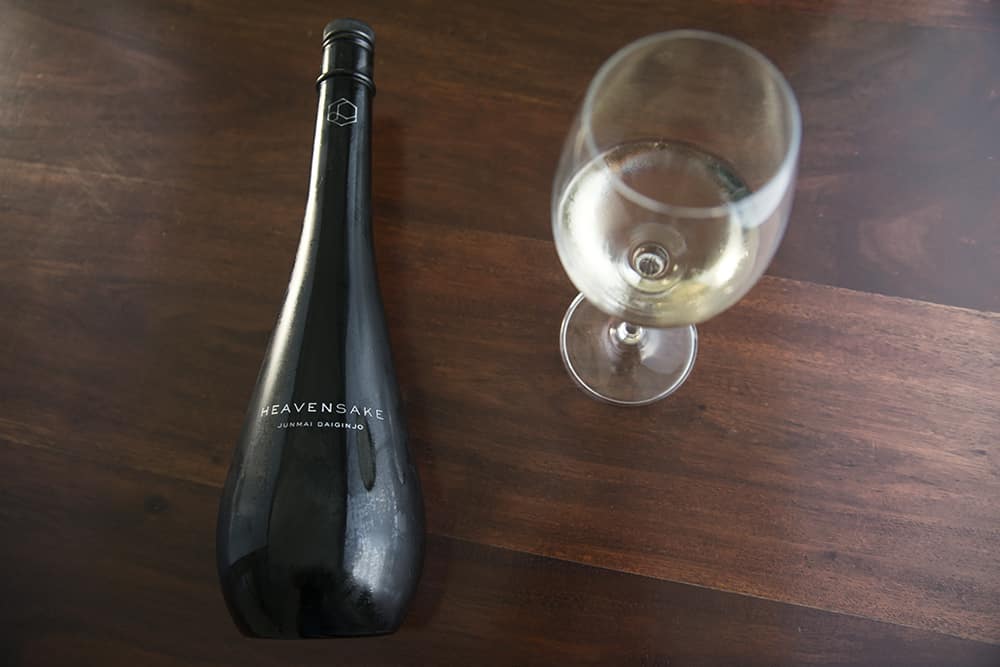HEAVENSAKE is a relative newcomer to the sake scene. But the fledgling brand is already leaving its mark.
This post will explore one of the most innovative producers in the industry. You’ll learn what they’re doing differently, about their award-winning brands, and where to buy some and have it delivered.
About HEAVENSAKE
HEAVENSAKE is a new private label brand cofounded by Regis Camus. He’s the Chef de Cave at Maison Rare Champagne. And he’s creating his sake with a Champenoise approach.
Regis Camus and Blending
Blending is at the heart of Champagne production. It allows winemakers to combine different vintages, grapes, and vineyards into one wine. And it leads to more complexity and depth.
And this is a process that Regis Camus knows very well.
Now Camus applies these techniques in Japan, and it’s kind of a big deal.
Sake also relies on blending (chogo). Even tanks made the same way with the same ingredients will taste different. Brewers blend them for consistency and balance. But it’s rare for toji to blend completely different sake to create something new.*
*Manaturu of Fukui and Kenbishi of Hyogo are a couple of leading exceptions.
Unique Blends of Sake
HEAVENSAKE is likely the only brand exclusively blending to make unique and interesting sake. The company contracts with famous breweries and combines several sake with different profiles into one bottling.
The base sake use rice polished to different levels. Presumably, multiple types of yeast are used, as well. And each base sake has a different aroma, taste, and structure.
By tasting many sake, Camus is able to use his expertise to combine them into a superior product.
HEAVENSAKE produces only junmai sake and has four products. Let’s take a look at them.
HEAVENSAKE Junmai 12
HEAVENSAKE Junmai 12 is the earthiest sake in the lineup. It’s brewed by Konishi Shuzo of Hyogo. This famous brewery is over 470 years old!
To make Junmai 12, a handful of sake with rice polished between 50% and 70% are used. So that means it includes sake that would potentially qualify as Junmai Ginjo and Junmai Daiginjo. Practically, it means there are fruity, floral, and aromatic elements in a sake that is primarily savory.
And also of note, Junmai 12 is only 12% ABV. That’s very low for dry sake. And it translates to a low-calorie, light-body sake.
Dive deeper into HEAVENSAKE Junmai 12 with this full review. I explore tasting notes and how it’s made. It also includes links to buy and have it delivered.
HEAVENSAKE Junmai Ginjo
Moving up in grade, HEAVENSAKE Junmai Ginjo is a fruitier sake than Junmai 12. It’s brewed by Urakasumi of Miyagi. It’s another venerable kura with a huge following.
This sake uses a blend of sake with an even higher degree of polishing. Some of the rice in the base sake are milled as much as 40% (remaining). That would put it squarely in the ultra-daiginjo category!
And despite the impressive components in the blend, HEAVENSAKE Junmai Ginjo is surprisingly affordable.
It’s impressive sake. Unsurprisingly, it’s fragrant, fruity, and clean. But it also has a wonderful herbal quality plus umami. There’s just a lot going on.
Check out my HEAVENSAKE Junmai Ginjo review to learn more. I discuss tasting notes, pairing suggestions, and more. And again, you’ll find links to purchase a bottle and have it shipped to your house.
HEAVENSAKE Junmai Daiginjo
The most premium sake in the lineup is HEAVENSAKE Junmai Daiginjo. It’s a blend of Dassai sake brewed by Asahi Shuzo. That alone is a huge selling point.
This brew can be considered an ultra-daiginjo. It uses sake with Yamada Nishiki rice milled between 23% and 39%! So it’s a blend of very fruity, smooth, seductive sake.
And it’s hard not to be impressed. If you like juicy, rich sake, this is one to try.
My HEAVENSAKE Junmai Daiginjo review takes a long look at this award-winning bottle of nihonshu. Again, I discuss what it tastes like, how it’s made, pairings, and more. And you’ll find retailers where you can purchase this sake.
HEAVENSAKE “Baby Sake” Junmai Ginjo
The fourth product in the HEAVENSAKE lineup is Baby Sake. It’s brewed by Hakushika of Nada, Kobe. This brewery dates back to 1662. And today, they’re probably the biggest in Japan. That said, they still make excellent sake.
I don’t know much about Baby Sake, as I haven’t tasted it. But based on its -1 SMV, it’s safe to assume it is faintly sweet. And it uses rice polished between 50-60%, so it’s likely fruity, floral, and aromatic.
Learn more about Baby Sake from the HEAVENSAKE website.



